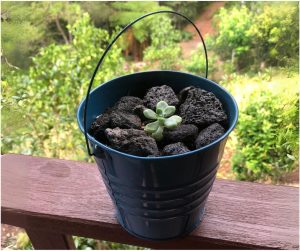I often read scary posts on Facebook about whether you can really use essential oils with animals so I thought I would debunk some of the myths that I see floating around.
Can essential oils really kill cats? 
Animals aren’t humans and therefore have their own unique considerations when it comes to essential oils. They have different levels of sensitivity and toxicity when it comes to essential oils.
Not only is there variance within a species about how animals react to essential oils, but, like humans, not all animals of a particular species are the same.
How much should I use?
When using essential oils with animals, always start low to get your animal used to essential oils as they are very potent. It is important to consider:
- Their size
If the protocol for an adult human weighing 70kgs is for 3-5 drops, then for a horse weighing 700 kgs you would need to multiply that by 10.
If the animal weighs just 7kgs then you would use 1/10th of the recommended drops of essential oils.
General Guidelines to use essential oils with animals:
For small animals (cats, dogs and exotics) – 90% dilution ratio (1 drop of essential oil plus 9 drops of a carrier oil such as Coconut, Almond or Apricot). See additional notes on cats.
Apply 3-5 drops diluted in 20-40 drops of carrier oil.
For larger animals (large dogs, goats and pigs) apply 3-5 drops neat (but dilute if using essential oils high in phenols or any hot oils)
For large animals (cattle, horses etc) apply 10-15 drops neat (dilute if using essential oils high in phenols or any hot oils)
Remember Less is more – Gradual is better – Moderation is wise
Here are some other factors you need to take into consideration if you want to use essential oils with animals:
- Their hair (more hair increases their uptake of essential oils)
Cats have more hair follicles than most dogs or horses and therefore absorb more essential oils. Some dogs are very hairy, whilst others aren’t.
- Their sense of smell
Dogs possess up to 300 million olfactory receptors in their noses compared to about six million for humans. That’s 50 times more. This can increase their sense of smell compared to humans by hundreds to even thousands of times more.
So even something as mild as a single drop of lemon oil can take some getting used to for dogs.
- Their unique species and sensitivitiesMany animals, especially cats, are extremely sensitive to essential oils which are high in compounds such as sesquiterpenes, phenols and eugenols. These include oils such as Oregano, Thyme, Clove, Mountain Savory and Cinnamon Bark.
What if an animal dislikes an essential oil?
Often it can be because it is new and foreign to them. It may be way too strong for them or even remind them or something from their past that they didn’t like. This is why it is important to introduce new essential oils slowly.
Try diffusing them first before applying topically. You could also mix them in with something they do like as a way of acclimatising them to it.
Which essential oils can be used on pets?
While there is no definitive list if you want to use essential oils with animals some of the most popular are:
Lavender, Helichrysum, Frankincense, Clary Sage, Elemi, Geranium, Roman Chamomile, Rosemary and Valerian are oils which have been tried and tested across most species. If you are unsure of what to use, then try one from this list first.
Animals, like humans, can have sensitivities to some essential oils because of other things in their environment, such as any medications they may be on, tick and flea treatments, cleaning products their owners are using for their bedding or even on other areas on which the animal lies, such as the floor.
It is important to switch to natural cleaning products, like the Thieves range, if you have animals as their health can be compromised by the accumulation of harmful chemicals in these products. They absorb a lot of these chemicals through their fur and paws. We wouldn’t want to be unknowingly harming our pets with our cleaning products and air fresheners.
How do I use essential oils on animals?
- Essential oils rich in menthol (such as Peppermint) should not be used on sensitive areas such as belly, armpits, throat or genital area).
- Animals, like humans, have the same reaction to photosensitive oils such as Orange, Tangerine, Grapefruit, Lemon, Bergamot and even Angelica, so if you are using these don’t let your animal go out in the sun as it could burn their skin.
- Keep essential oils away from the eye area and don’t put them in the animal’s ears.
- If your animal is pregnant or nursing it is always advisable to seek advice from a Vet and be extra cautious when using any essential oils.
- Like humans, there are some essential oils that should be avoided by animals who are epileptic or have high blood pressure. These include oils high in ketones such as Basil, Rosemary, Sage and Tansy.
- If animals have allergies then be extra cautious using essential oils. Do a skin test before using them.
- Start by diffusing essential oils before using them topically.
Oils to avoid with cats
Cats are particularly susceptible to essential oils because their liver can’t break down the constituents in some essential oils. You should avoid applying these topically on cats and if you are diffusing them, always leave a door or window open so they can leave the room if they need to.
The oils to avoid with cats are:
- Bergamot
- Clove
- Cypress
- Grapefruit
- Lemon
- Lime
- Melaleuca
- Oregano
- Peppermint
- Rosemary
- Thyme
- Roman Chamomile
- Vetiver
- Orange
- Wintergreen
Why does quality matter if I want to use essential oils with animals?
Often when researching how to use essential oils with pets on the internet, you’ll come across sites warning people not to use essential oils with animals. This is usually because people have used essential oils inappropriately in the past or because they have used poor quality essential oils that have been created for the perfume industry and not for any therapeutic benefit.
Many essential oils on the market are adulterated, either with synthetics or already added to a carrier oil, meaning that they are no longer just the pure essential oil.
Even the way in which an essential oil is produced, the seeds that are chosen, the way it is grown, distilled and handled all contribute to the quality of the end product.
This is why I only use and recommend Young Living essential oils. Having personally visited the farms I know how they are planted, cultivated, harvested, distilled and even tested.
Young Living even have thier very own Pet Friendly range of essential oils. You can read more about them here.
If you don’t already order Young Living essential oils and would like to have your own retail or wholesale account please CLICK HERE!











 Subscribe to Hot Oily Mumma
Subscribe to Hot Oily Mumma